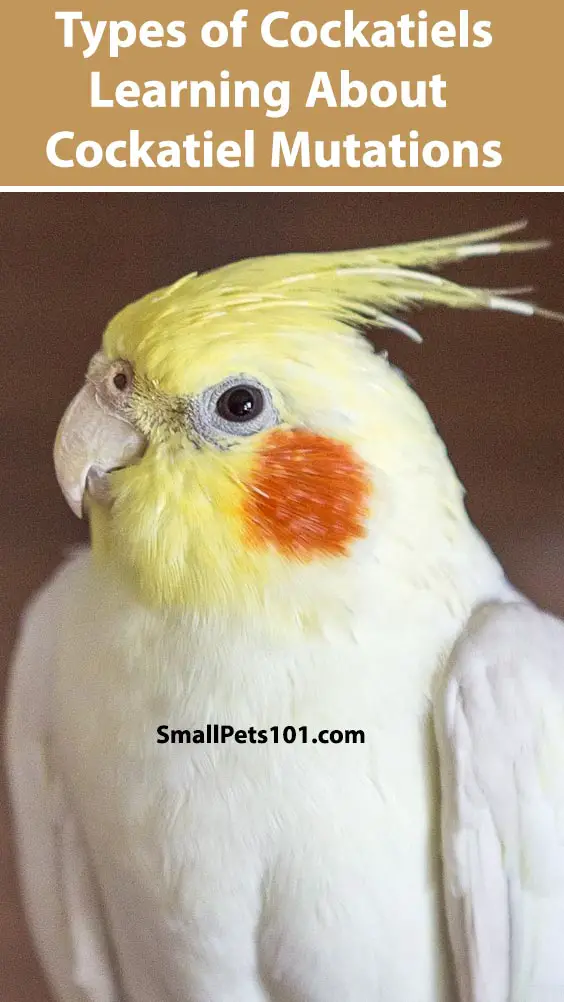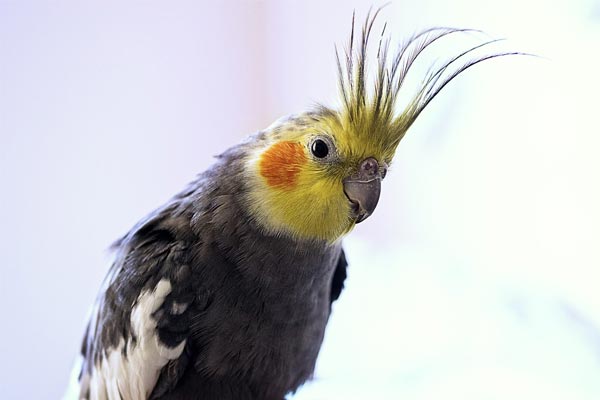Cockatiel breeding is a complicated topic. In fact, at the moment there is no unified consensus on the subject in the bird breeding community.
This is partly because cockatiels can be bred in many different colors. Sometimes the colors and color patterns are so different you might think you are looking at a whole different bird species.
In this article, we will break down what makes breeding cockatiels so complex and why often people think there are many different types of cockatiels.
Types of Cockatiels
As the World Birds organization explains, there is only one type, or species, of cockatiel in the world. The cockatiel bird’s scientific species is Nymphicus hollandicus.
However, there are many different colors and color patterns, also called mutations, that cockatiels can display. In the rest of this article, we will introduce you to the main mutations for wild and captive-bred cockatiel birds.
See Examples of Different Types of Cockatiels
In this YouTube video, you can see visual examples of some of the different types of cockatiels you will be learning about in this article.
Two Main Reasons Why Breeders Don’t Agree on the Types of Cockatiels
There are two primary reasons why you may see anywhere from five or six to up to 20 different types of cockatiels depending on which resource you consult.
1. Many mutations are sexually dimorphic
The first key reason to understand about cockatiel coloration is that in many colors, the males and females are sexually dimorphic.
As Niles Animal Hospital explains, this means males and females have different colorations upon reaching maturity (after the first molt, which happens around eight months old).
In many cases, the female will retain the same exact coloration as the juvenile while the male will change coloration. This adds to the confusion, as you might imagine.
However, as Feisty Feathers explains, not all mutations result in different adult coloration for males and females. Lutino, albino, and pied are perfect examples of non-dimorphic colors or types.
2. Cockatiel breeding genetics is complex
The second and main reason why so many different types of cockatiels seemingly exist depending on which breeder you ask is that genetics is a complicated topic.
Even the most advanced breeder will readily tell you they learn something new with every new clutch they breed.
As genes combine and recombine, new colors and color patterns can emerge, especially with breeders who deliberately choose their breeding pairs with this result in mind.
Meet the 9 Types of Cockatiel Mutations
As Feisty Feathers points out, there are nine major types of mutations that cockatiels can be bred to display.
If you come across other mutations that you don’t see listed here, keep in mind that even the most advanced breeders are still learning more about cockatiel genetics.
As we mentioned in the previous section here, breeders will always have more to learn about how the genes of parent birds influence color and pattern in chicks.
This means there are likely to be many more new surprises in terms of all the color variations baby cockatiels can display.
In most cases, even so-called “exotic” or “rare” colors and color patterns will relate back to one or more of these nine main types.
1. Normal cockatiels
Whenever you see the term “normal” in relation to a cockatiel type, what this means is that the color you are seeing is the color wild cockatiels display.
The vast majority of wild cockatiels will have the normal color pattern, which is also sometimes called simply “gray.”
A normal cockatiel male will have a yellow head, orange cheek patches, and a grey body with white stripes along with the wings.
A normal cockatiel female will have the same except the head will stay gray with yellow barring on the tail.
2. Pearl cockatiels
The pearl type of cockatiel is a beautiful spotting pattern of grey and white and yellow all over the bird.
Females retain the pearl pattern while males eventually lose it until they greatly resemble normal cockatiels.
3. Lutino cockatiels
The lutino cockatiel is unique in that these birds do not produce eumelanin or black spectrum pigment. So only their yellow/red spectrum pigment will display, as GTS Aviaries explains.
However, as Research Gate explains, the yellow/red pigment in parrots is not phaeomelanin but rather a unique type of pigment called psittacine.
Lutino cockatiels have red eyes, yellow bodies, wings, and tails. They will have bright orange cheek patches as well.
4. Whiteface cockatiels
The whiteface cockatiel is just the opposite of the lutino. These birds lack the yellow/red psittacine spectrum pigment and only display eumelanin coloration.
Juvenile whiteface cockatiels will be all grey with white stripes on the outer wings (when folded). After the first molt, males will be easy to distinguish from females because of their pure white faces.
5. Albino cockatiels
Albino and lutino are where a lot of people get confused about cockatiel types. They seem quite similar because both albino and lutino cockatiels have red eyes.
The difference is one degree. Lutino birds produce only one type of pigment. True albino birds produce no pigment at all, which results in pure white feathers and red eyes.
It almost doesn’t need mentioning that these birds are impossible to tell apart in adulthood – males and females will both be pure white with red eyes.
6. Pied cockatiels
Pied cockatiels are one of the most complex and unique types of cockatiels. These birds are missing pigment production in certain areas, but there is no real consistency as to which areas will be missing pigment.
This means that each bird will grow up to look unique. If a pied cockatiel inherits only one copy of the gene for the pied type, there may be additional differences in coloration.
Interestingly, since pied controls for the absence of pigment rather than a color or color pattern, the pied type can co-exist with other types found here. This is where adult coloration can really become unique and striking!
7. Yellowface cockatiel
The yellowface cockatiel gets its type name from the yellow color of the cheek patches (in the normal these patches are orange).
8. Silver cockatiel
A silver cockatiel is simply a softer, lighter tone of grey. As Cockatiel Genetics by Feather Affair points out, these birds may also have reddish eyes.
9. Cinnamon (sometimes called fallow)
Cinnamon and fallow are different genes that interact with the normal gray coloration to produce a brownish color instead.
Here, which is a matter of the degree of coloration and the genetics of the parent birds.
New and Evolving Cockatiel Types
As we mentioned here earlier, there are always new types of cockatiels being developed.
In this way, cockatiel breeding is not unlike dog breeding. Breeders may deliberately cross birds to try to produce a new coloration or pattern.
Breeders may also discover a new coloration when a chick grows up to look different than its nestmates and then work to develop that new coloration for future generations.
It is also worth noting that sometimes it is difficult to determine precisely which type of cockatiel you are looking at just by appearance. In these cases, breeders will order a DNA test to find out what underlying genes may be contributing to the coloration.

